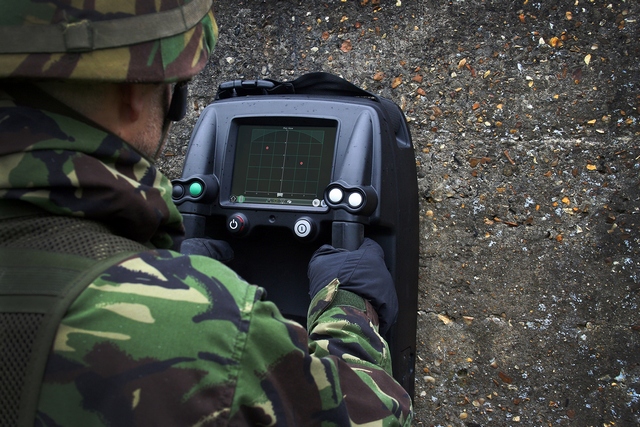From the fascinating-yet-creepy files, a British firm has unveiled a backpack-mounted radar that allows users to see through walls. The device, the Prism 200c, is marketed to law enforcement and the military in more than 60 countries.

From the fascinating-yet-creepy files, a British firm has unveiled a backpack-mounted radar that allows users to see through walls. The device, the Prism 200c, is marketed towards law enforcement and the military. Users place their backs toward a wall or a building and are instantly given intelligence on the locations and movements of anyone behind the wall. Results are transmitted to a user's handheld device.
According to the Prism's makers, Cambridge Consultants, the device was “developed for high-risk and hostile situations with minimal time and very narrow margin for error.”
While the technology is not new--earlier versions of the behind-the-wall radar have been on the market since 2006--this is the first time a single-user version of the radar has been available. Prior versions required one emergency worker to mount the radar up against a wall while a second user viewed output on a nearby computer.
Cambridge is currently marketing the device in North America, Europe, and Asia. Customers primarily include foreign millitaries, special forces, and security agencies in 67 different countries.
The device's radar works with brick, block, wooden, or concrete walls, and can provide users with 3-D views of movement inside a building's interior. Interior views are gathered through ultra-wideband, which is primarily used for wireless USB products on the consumer market. Ultra-wideband has an extremely high spatial capacity and offers the bonus of being extremely hard to detect while in use.
But if being able to see people behind walls just isn't enough, another new device offers the chance to find inanimate objects behind walls. Cambridge has announced the development of a prototype handheld device which gives 3-D images of objects hidden within walls or floors.
The device, called “Sprint,” is designed to let users find concealed explosives and contraband within seconds, while also giving emergency crews preemptive knowledge of pipes and wires hidden behind walls. A current prototype is the size of a standard sheet of letter paper and uses short pulses of high-bandwidth energy to create high-resolution images. Unlike most similar technologies currently on market, Sprint will allow for easily interpreted imaging without needing access to both sides of the wall.
[Image courtesy Cambridge Consultants]
For more stories like this, follow @fastcompany on Twitter. Email Neal Ungerleider, the author of this article, here.
Read More: Counterterrorism Software Helps Cops Shine Light Into Terrorism's Dark Corners